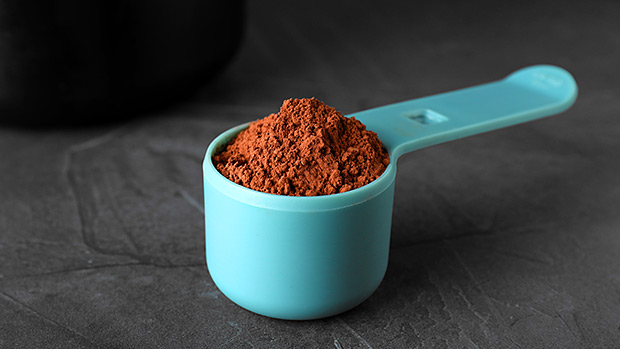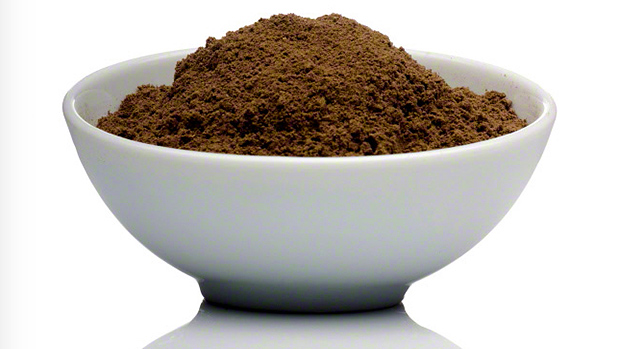Generally speaking, the vast majority of viruses can't currently be cured. Instead, they're treated.
We bombard them with anti-virals to make it harder for them to replicate and do their damage. It's kind of like an overmatched boxer repeatedly flicking a jab into a much stronger opponent's face so that he remains a little off-balance and can't take the weaker opponent's head off.
Unfortunately, this viral boxing match can go on for days, weeks, months, or even years. And if you make one mistake, like missing a dose or two of your anti-viral medication or letting your immune system flag a bit, that virus can connect with a roundhouse blow and knock you flat on your feverish back.
There is a class of chemicals that shows considerable anti-viral activity, though, and a large number of scientists believe they could either be the source for future anti-influenza drugs or provide the skeletons through which a novel generation of viral treatments could be constructed.
This class of chemicals comes from plants and they're called polyphenols. They're widely known to play a huge role in human health and immunity, offering protection against chronic human degenerative ailments like cardiovascular disease, osteoporosis, cancer, diabetes, and neurodegenerative disease.
These polyphenols are found in foods like blueberries, raspberries, coffee berries, broccoli, kale, spinach, apple, mango, you name it; virtually every type of plant matter growing under God's sun.
You're probably at least peripherally aware of some of these polyphenols, or know some specific polyphenols like resveratrol, curcumin, quercitin, or some members of the anthocyanin group. Their life-extending, health-enhancing effects are also the theory behind Biotest's Superfood which contains desiccated and freeze-dried forms of the above-mentioned fruits and vegetables, along with several others.
A large number of these polyphenols appear to be particularly valuable now as there's mounting evidence that they might possibly be able to mitigate or even thwart the coronavirus.

What Exactly Are These Virus Killers?
Polyphenols are important plant metabolites and they protect plants against ultraviolet radiation, insects, fungi, bacteria, and yes, viruses. About 8,000 of them have been identified and scientists have grouped them into four main classes:
- Phenolic acids
- Flavonoids
- Stilbins
- Lignans
The reason scientists are excited about the effects of polyphenols on viruses isn't just wishful thinking; they've been demonstrated repeatedly in laboratory experiments on animals and humans.
For instance, there are currently no licensed drugs to cure or treat Zika virus, Yellow fever, Japanese encephalitis, West Nile virus, or chikungunya virus, but various polyphenols have shown anti-viral activity against all of them.
Similarly, EGCG, a polyphenol found in green tea and Superfood, exhibits anti-viral effects against hepatitis B and C, herpes simplex 1, influenza A, adenovirus, reovirus, and vesicular stomatitis virus, among others.
Tea polyphenols in general are particularly aggressive towards influenza A virus, and six of them show activity against influenza B.
Polyphenols contained in blueberries (also in Superfood) and the herb, Rhodiola rosea have even been found to prevent respiratory viruses from taking foot in marathon runners, who are hugely susceptible to disease after a race.
"Basically, after heavy exertion, bacteria and viruses can multiply at a higher rate than normal due to factors in the serum like stress hormones and inflammatory cytokines," explained David Neiman, PhD, who conducted the study on marathoners.
"This is why runners are six times more likely to get sick after a marathon. We showed that in those who use Rhodiola rosea, the viruses could not multiply, meaning it was acting as a countermeasure."
Another study, this one involving a 1,000-person American community, found that three or four servings of fruit a day reduced the incidence of upper respiratory tract infections, prompting the team to write:
"We are producing some of the first human studies showing plant polyphenols... work with the immune system to help clear viruses and keep their ability to multiply under control."
The polyphenol curcumin, specifically, has even exhibited anti-viral effects against an enteric coronavirus, giving us hope that it might similarly affect its cousin, COVID-19.
How Do Polyphenols Fight Viruses?
There are several ways in general that polyphenols can ruin a viruses' day. In general terms, they can suppress viral replication and viral adhesion, or modulate intracellular transductional signaling pathways.
They might interact with the functions of proteins at multiple binding sites, or they might spur our own immune systems into increasing levels of certain immunoglobulin's, or activate the production and hostile congregation of macrophages, T cells, B cells, neutrophils, natural killer cells, and dendritic cells.
Many of these immune cells could dismantle viruses or inhibit replication of their RNA. Others might devour them. Branches of cytoplasm would extend out towards the virus, engulf it, pull it into the cell's enzyme-filled maw, and eat it alive (or as alive as a virus can be).

What About the Coronavirus, Specifically?
Coronavirus is unlike the flu in that the first symptoms are fatigue, aches and pains, and a sore throat (generally). That's Phase One and it subsides after about 5 days. That's about as bad as it gets for approximately 80% of the population.
The other 20% aren't so lucky. After 5 days, they start to develop a cough, severe shortness of breath, and pneumonia-like symptoms in general. If it gets bad enough, or if they have some sort of underlying medical condition, patients die.
But there are clues as to what differentiates the 20% from the 80%, and it sure as heck isn't just luck. When COVID-19 first enters the cell, it attaches to a protein called ACE-2, which is an enzyme that plays a beneficial role in cardiac, respiratory, and renal function.
When the virus attaches to ACE-2, the protein is rendered inactive. One scientist coined it "ACE -2 exhaustion" and it's thought to determine how bad a patient's pneumonia can get, along with possibly leading to eventual heart failure. However, experience with the SARS virus tells us that if you restore levels of ACE-2, you reduce the severity of the virus-caused pneumonia.
But here's the clincher: Young people generally have higher levels of ACE-2 than old people, and all those diseases or conditions associated with old age that are said to predict how a patient fares against COVID-19 – things like advanced age, cancer, diabetes, smoking – are also associated with depleted or inadequate levels of ACE-2.
(That's not to say young people can't have low levels of ACE-2. They might not have any of those diseases that make them more susceptible to coronavirus, but they might have a poor diet, repeatedly light the lifestyle candle at both ends, or just have poor health in general, all of which might lower their ACE-2 levels and make them more susceptible to the virus.)
There are at least a couple of things that restore or increase levels of ACE-2, though. One is exercise and another is the polyphenols in plant-based foods and, by extension, something like Superfood.
If ACE-2 levels aren't restored, COVID-19 breaks into the cell and co-opts mTOR, a major regulator of growth. It can activate, reduce, or even suppress the mTOR signaling pathway in order to make the cell environment a pleasant place for the virus to live and have a family.
But, as is the case with ACE-2, there are at least a couple of things you can do to protect the cell by modulating mTOR to the cell's benefit. Again, they include exercise and the polyphenols in plant-based foods and, by extension, something like Superfood.
If mTOR isn't modulated to the cell's benefit, the virus produces millions of copies of itself and then instructs the cells to produce an enzyme called 3CL protease, which causes the cell to burst open and release the virus progeny to issue forth and infect other cells.
You probably saw this coming, but you know what inhibits 3CL proteases from being created? Yep, a certain subcategory of polyphenols known as anthocyanins, which are found in many purple, blue, or red fruits and vegetables and, by extension, something like Superfood that contains several varieties of these anthocyanins.
Clearly, the liberal use of polyphenols from whole fruits and vegetables, through extracts, or through desiccated and freeze-dried forms like Superfood, could possibly be a game-changer when it comes to fighting coronavirus, viruses of all kind, bacterial or fungal infections, or many of the other diseases or conditions that plague modern man.

How to Use This Info
I don't have any definitive proof that eating a lot of polyphenols will prevent you from getting sick or developing some horrible disease. No one does. All I or any other advocate of lots of dietary polyphenols can do is look at the research and see that including them in the diet – in large amounts – is almost surely a good idea.
Given that, I recommend trying to eat one, two, or more items from each of the following natural food groups every day, as they're each rich in different polyphenols:
- Vegetables: Artichokes, potatoes, rhubarb, yellow onions, red cabbage, cherry tomatoes, leeks, broccoli, celery.
- Fruits: Berries, apples, apricots, plums, pears, grapes, cherries (the darker the fruit, the higher the polyphenol content).
- Whole Grains: Buckwheat, rye, oats, barley, corn, wheat, rice.
- Nuts, Seeds, Legumes: Black beans, white beans, pecans, almonds, walnuts, flaxseed, chestnuts, hazelnuts.
- Fats: Virgin olive oil, sesame seed oil, dark chocolate.
- Beverages: Coffee, tea, red wine, cocoa.
- Spices: Oregano, rosemary, soy sauce, cloves, peppermint, anise, celery seed, saffron, spearmint, thyme, basil, curry powder, ginger, cumin, cinnamon, garlic.
Alternately, or as a supplement to your daily polyphenol intake, you can use Superfood, a blend of high-polyphenol fruits, berries, and vegetables that were gathered farm-fresh, desiccated (removing all cellulose and indigestible plant matter like husks, rinds, stems, and seed coatings), and freeze-dried so that they retain their nutrients and overall anti-oxidative capabilities.
Here are the ingredients in Superfood, along with some of the predominant polyphenols they contain:
Berries
- Wild Blueberry (1.5% anthocyanin)
- Orange (40% vitamin C)
- Raspberry (20% ellagic acid, 0.7% anthocyanins)
- Strawberry
- Acai Berry (1.5% total phenolic acids, 1% anthocyanins)
- Coffee Berry (50% total phenolic acids)
- Goji Berry
- Pomegranate (40% ellagic acid)
Vegetables
- Broccoli Sprout (5000 ppm sulforaphane)
- Kale
- Spinach (700 ppm lutein)
- Wasabi (20% glucosinolates)
- Wild Yam (20% diosgenin)
- Green Tea (95% total polyphenols, 65% total catechins, 40% EGCG)
Other Fruits
- Apple
- Mango
- Passion fruit
- Watermelon (1000 ppm lycopene)
Use two scoops (5 grams) of the mild-flavored powder every day. Just stir it into water or juice, mix it in oatmeal or yogurt, or blend it into your protein shakes to flick a jab into the face of any virus (or disease) dumb enough to challenge you.
Sources
- Roodabeh Bahramsoltani, Hamid Reza Sodagari, Mohammad Hosein Farzaei, Amir Hossein Abdolghaffari, "The preventive and therapeutic potential of natural polyphenols on influenza," Expert Review of Anti-Infective Therapy, Volume 14, 2016 - Issue 1.
- Berry, Michael, et al. "Human coronavirus OC43 3CL protease and the potential of ML188 as a broad-spectrum lead compound: Homology modelling and molecular dynamic studies," BMC Structural Biology, volume 15, Article number: 8 (2015)
- Ángela Vázquez-Calvo, Nereida Jiménez de Oya, Miguel A. Martín-Acebes, Emilia Garcia-Moruno, and Juan-Carlos Saiz, "Antiviral Properties of the Natural Polyphenols Delphinidin and Epigallocatechin Gallate against the Flaviviruses West Nile Virus, Zika Virus, and Dengue Virus," Front Microbiol. 2017; 8: 1314.
- Alejandro Cuevas, Nicolás Saavedra, Luis A. Salazar, and Dulcineia S. P., "Modulation of Immune Function by Polyphenols: Possible Contribution of Epigenetic Factors," Nutrients. 2013 Jul; 5(7): 2314–2332.
- Galland, Leo, MD. "Doctor offers coronavirus protection advice," Fox 10 Phoenix, March 24, 2020.
- Jagieta, GC, Aggarwal, BB, "'Spicing up' of the immune system by curcumin," J Clin Immunology, 2006 Jan;27(1): 19-35.
- Valerie Le Sage, Alessandro Cinti,1,2 Raquel Amorim, and Andrew J. Mouland, "Adapting the Stress Response: Viral Subversion of the mTOR Signaling Pathway," Viruses. 2016 Jun; 8(6): 152.
- Dony Mathew, Wei-Lu Hsu, "Antiviral potential of curcumin," Journal of Functional Foods, Volume 40, January 2018, pp. 692-699
- Bryan C. Mounce, et al. "Curcumin inhibits Zika and chikungunya virus infection by inhibiting cell binding," Antiviral Research, Volume 142, June 2017, pp 148-157.
- M Nakayama, K Suzuki, M Toda, S Okubo, Y Hara, T Shimamura, "Inhibition of the Infectivity of Influenza Virus by Tea Polyphenols," Antiviral Res, , 21 (4), 289-99, Aug 1993.
- Teymouri, M. et al. "Curcumin as a multifaceted compound against human papilloma virus infection and cervical cancers. A review of chemistry, cellular, molecular, and preclinical features," Biofactors, 2017 May6;43(3):331-346.
- Du Ting, et al. "Multisite Inhibitors for Enteric Coronavirus: Antiviral Cationic Carbon Dots Based on Curcumin," ACS Publications, September 12, 2018.
- Seri Jo, Suwon Kim, Dong Hae Shin, Mi-Sun Kim, "Inhibition of SARS-CoV 3CL Protease by Flavonoids," J Enzyme Inhib Med Chem, 35 (1), 145-151, Dec 2020.
- Soheil Zorofchian, et al. "A Review of Antibacterial, Antiviral, and Antifungal Activity of Curcumin," Biomed Research International, Volume 2014, Article ID 186864.
- Zi-Feng Yang, Li-Ping Bai, Wen-bo Huang, Xu-Zhao Li, Sui-Shan Zhao, Nan-Shan Zhong, Zhi-Hong Jiang, "Comparison of in Vitro Antiviral Activity of Tea Polyphenols Against Influenza A and B Viruses and Structure-Activity Relationship Analysis," Fitoterapia , 93, 47-53, Mar 2014.






